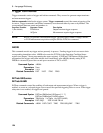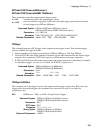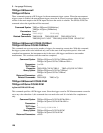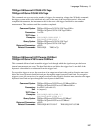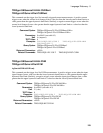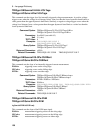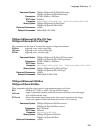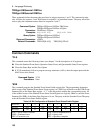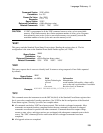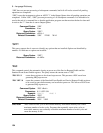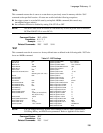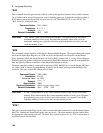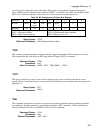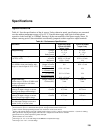
8 – Language Dictionary
132
TRIGger:SEQuence1:DEFine
TRIGger:SEQuence2:DEFine
These commands define the names that are aliased to trigger sequences 1 and 2. The command accepts
only ACQuire for sequence 2 and TRANsient for sequence 1 as predefined names. The query allows the
user to query the instrument names aliased to sequences 1 and 2.
Command Syntax
TRIGger:SEQuence1:DEFine TRANsient
TRIGger:SEQuence2:DEFine ACQuire
Parameters
TRANsient, ACQuire
Examples
SEQ1:DEF ACQ SEQ2:DEF TRAN
Query Syntax
TRIGger:SEQuence1:DEFine?
TRIGger:SEQuence2:DEFine?
Returned Parameters
<CRD>
Related Commands
TRIG:SEQ2:ACQ TRIG:SEQ1:TRAN
Common Commands
*CLS
This command causes the following actions (see chapter 7 for the descriptions of all registers):
$ Clears the Standard Event Status, Operation Status Event, and Questionable Status Event registers
$ Clears the Status Byte and the Error Queue
$ If *CLS immediately follows a program message terminator (<NL>), then the output queue and the
MAV bit are also cleared.
Command Syntax
*CLS
Parameters
None
*ESE
This command programs the Standard Event Status Enable register bits. The programming determines
which events of the Standard Event Status Event register (see *ESR?) are allowed to set the ESB (Event
Summary Bit) of the Status Byte register. A "1" in the bit position enables the corresponding event. All
of the enabled events of the Standard Event Status Event Register are logically ORed to cause the Event
Summary Bit (ESB) of the Status Byte Register to be set. The query reads the Standard Event The query
reads the Standard Event Status Enable register.
Table 8-6. Bit Configuration of Standard Event Status Enable Register
Bit Position 7 6 5 4 3 2 1 0
Bit Name PON 0 CME EXE DDE QUE 0 OPC
Bit Weight 128 64 32 16 8 4 2 1
PON = Power-on has occurred
CME = Command error
EXE = Execution error
DDE = Device-dependent error
QUE = Query error
OPC = Operation complete



